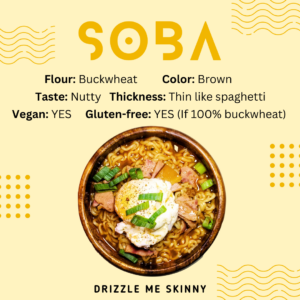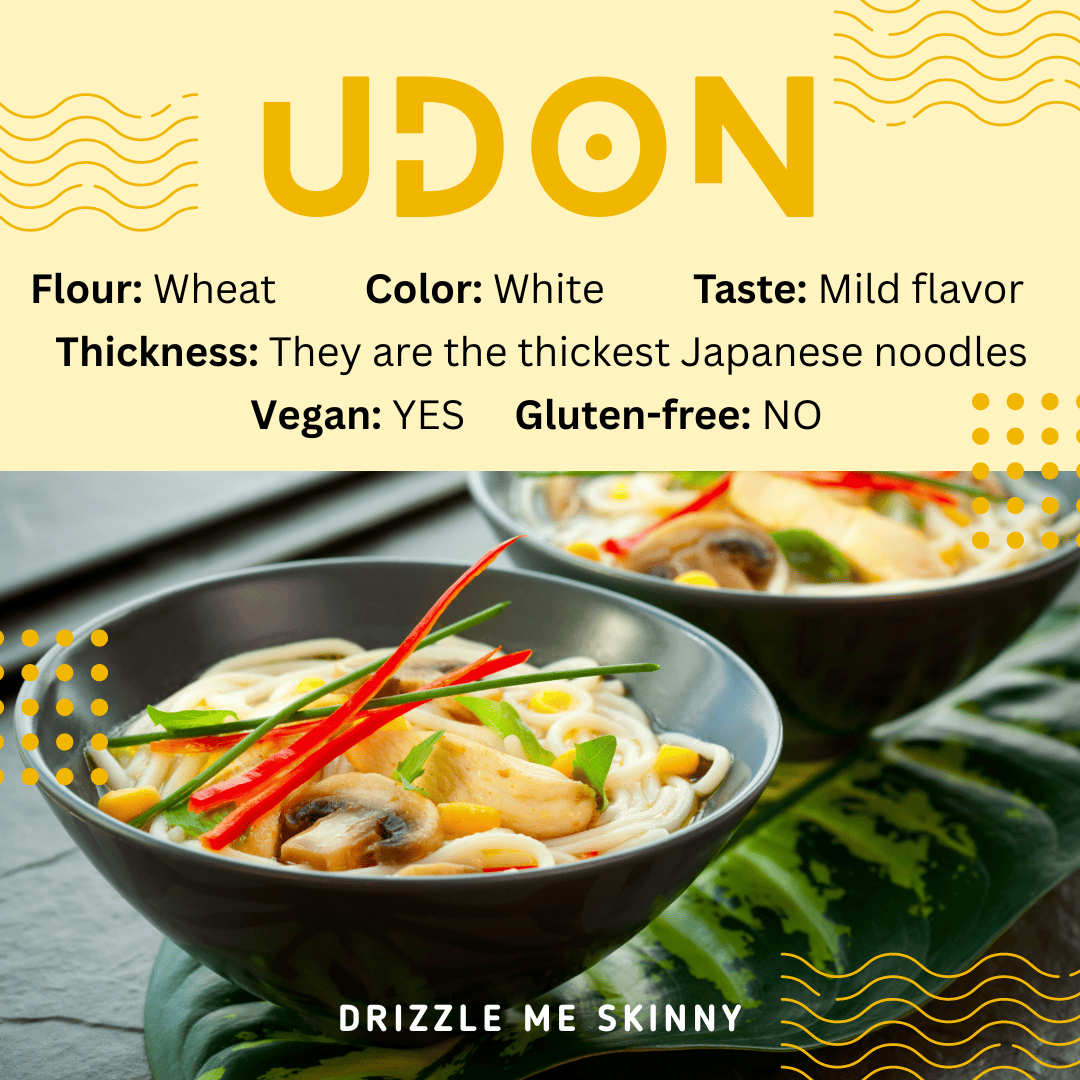Noodles are the staple that holds Japanese cuisine together. From big cities to quiet rural towns, you’ll find noodle dishes across this island nation. Served in vending machines and fancy restaurants alike, noodles are the star of the show.
You’ve probably tried Japanese ramen noodles. But how about udon and soba, two of the most iconic types of noodles in Japan? In this comprehensive guide, we will talk about the characteristics and uses of each and define what makes them different.
What is udon?
Udon is a thick noodle made from wheat flour, water, and salt. A staple of Japanese cuisine, these white noodles are chewy in texture due to their gluten content. Udon has a very subtle flavor and absorbs a lot of water and thus flavor from broths and sauces.
While the exact origins of udon noodles are not clear, they are generally believed to have come from China between the 12th and 14th centuries.
Types of udon dishes
The soft, chewy texture and subtle flavor of udon make these noodles very versatile. Depending on the season, they can be served hot in noodle soups or stir-fried dishes or can be chilled and served in a salad or with dipping sauces.
Here are some popular dishes using fresh udon noodles:
-
- Nabeyaki udon: A soup dish with udon noodles and vegetables in a flavorful hot broth, topped with egg and shrimp tempura. It’s served in individual clay pots.
- Kitsune udon: Another soup made with fragrant dashi broth and udon noodles topped with deep-fried tofu, which is also called aburaage.
- Kake udon: A simple, warm dish of udon noodles coated in mirin, soy sauce, and dashi stock and garnished with sliced green onion. Kake can be served cold.
- Zaru udon: Cold udon noodles served with mentsuyu sauce, which consists of sake, mirin, soy sauce, kombu, kelp, and katsuobushi (dried bonito flakes).
Great recipe using udon noodles
Is your mouth watering for some brothy noodle soup or an umami-rich bouncy noodle salad? Ours too! Get your fix with these wonderful recipes from Bon Appetit.
What is soba?
Soba is a thin, spaghetti-like noodle traditionally made from buckwheat flour, water, and salt. Sometimes wheat flour is incorporated to make the texture less grainy. Soba has a distinctive nutty taste and denser texture than udon, so they don’t absorb as much flavor from broths and sauces.
These noodles may have originated in China, but they have evolved to be a key ingredient in Japanese food. Soba is the noodle of everyday people, partially because buckwheat is easy to grow, even in poor conditions, and thus readily available.
Types of soba dishes
Like udon, soba dishes can be either hot or cold. The sauces and broths used with these noodles tend to be milder in flavor. This is due to the dense texture (they absorb less liquid than udon) and the distinct savory flavor of these buckwheat noodles.
Here are a few of the most popular soba dishes:
-
- Kitsune soba: Just like kitsune udon but with soba instead. A simple dish of noodles and vegetables in a hot broth, garnished with various toppings.
- Tempura soba: Noodles served in a hot dashi broth and topped with tempura (lightly battered and fried) shrimp and vegetables.
- Oroshi soba: A hot or chilled noodle dish served with dashi and soy-based tsuyu sauce and garnished with grated daikon radish.
- Tsukimi soba: Soba topped with a sticky mound of grated yam and flavored with salty dashi broth. This dish can be served hot or cold.
Great recipe using soba noodles
If you are getting hungry for soba (I know I am!) check out this Cold Soba Noodles with Dipping Sauce from The New York Times.
Summary: What is the difference between Udon and Soba?
Both udon and soba are traditional and iconic Japanese noodles that are delicious in both hot and cold dishes. They can be used interchangeably in many dishes, like kake, kitsune, zaru, and Japanese curry.
However, there are some distinct differences that separate these noodles and may make you prefer one over the other.
- Flour: Udon is made with wheat flour (has gluten), while soba is made with buckwheat flour (gluten-free)
- Thickness: Udon noodles are the thickest Japanese noodles while soba noodles are thin like spaghetti.
- Texture: Udon noodles are soft, chewy, and bouncy and absorb a lot of broth. Soba noodles are denser, grainy, and don’t absorb much broth.
- Taste: Udon noodles taste bland on their own but absorb the flavor of broths and sauces. Soba has a distinctive nutty flavor from buckwheat flour.
Related Recipes
Looking for more noodle dishes to fall in love with? I’ve got you covered! My green spaghetti in creamy poblano sauce showcases some authentic Mexican flavors, and it’s mild enough for the kids, too!
If you’re enjoying these educational comparison articles, be sure to check out some others in this series: Ube vs Taro, Nagiri vs Sashimi, and Butter Chicken vs Tikka Masala are great places to start!
Frequently Asked Questions (FAQs)
Which is healthier, Udon or Soba?
Soba is considered healthier because buckwheat is gluten-free, is lower in carbohydrates and calories, and contains antioxidants. Both are good sources of B vitamins and iron.
Are soba noodles gluten-free?
A: Soba noodles are gluten-free if they are 100% buckwheat flour. Many restaurants and packaged noodles contain some wheat flour, so be sure to double-check.
Is udon or soba easier to digest?
Because udon noodles are less dense and absorb a lot of water, they are easier to digest. If you can’t gluten, however, soba noodles will be better for your digestion.
Udon VS Soba: What's the difference?

Instructions
- Choose your favorite noodle, Soba or Udon
- Click the link to view the recipes
- Follow the linked instructions
- Enjoy!



